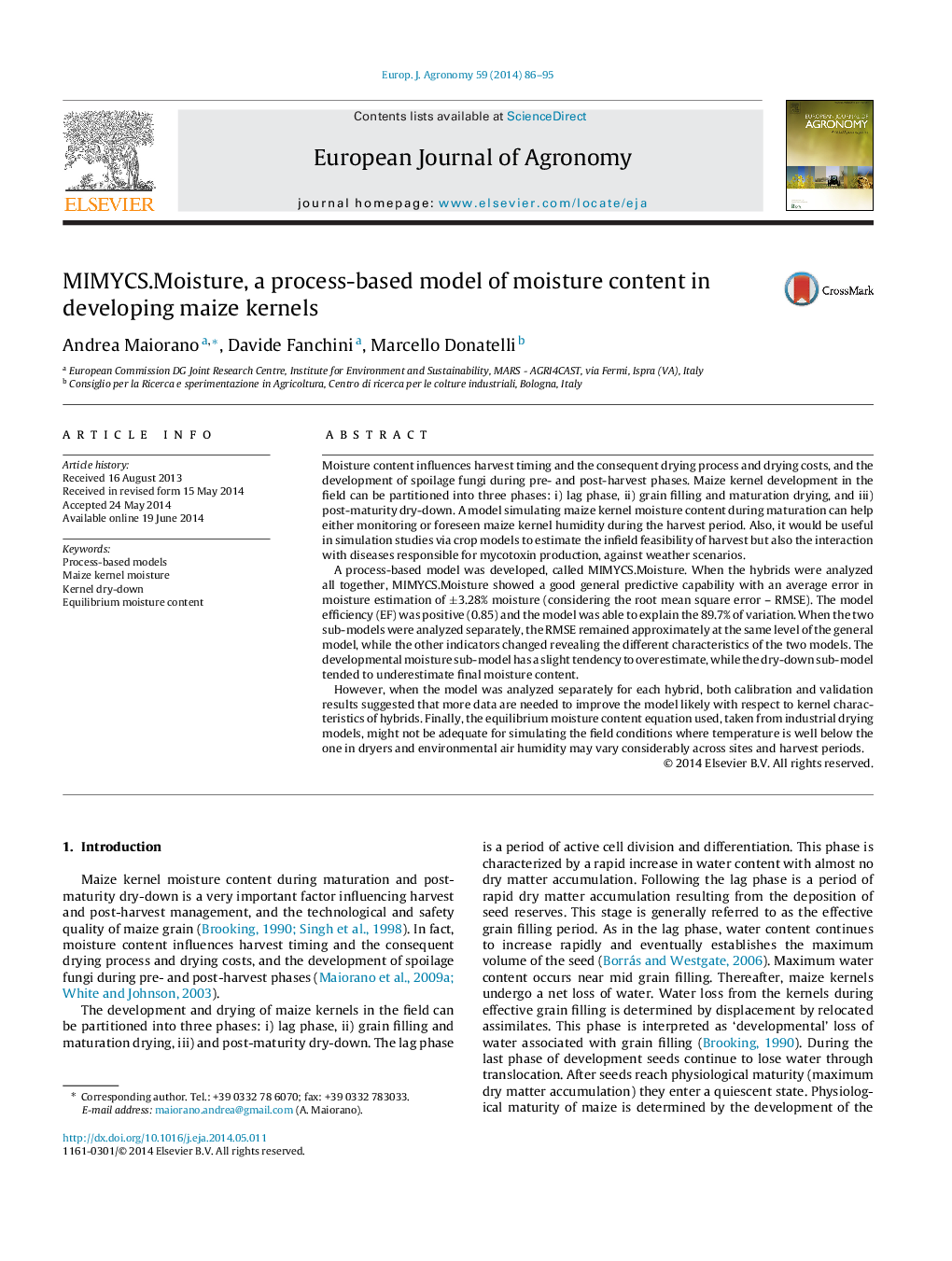| کد مقاله | کد نشریه | سال انتشار | مقاله انگلیسی | نسخه تمام متن |
|---|---|---|---|---|
| 4508907 | 1624466 | 2014 | 10 صفحه PDF | دانلود رایگان |

• We developed a process-based model for maize kernel moisture during the field phase.
• The model is called MIMYCS.Moisture and it was developed under the MIMYCS project.
• Model was calibrated and validated using a dataset collected in field conditions.
• The model resulted accurate in the estimation of moisture content.
• More studies and data are needed to improve the model with respect to maize hybrids.
Moisture content influences harvest timing and the consequent drying process and drying costs, and the development of spoilage fungi during pre- and post-harvest phases. Maize kernel development in the field can be partitioned into three phases: i) lag phase, ii) grain filling and maturation drying, and iii) post-maturity dry-down. A model simulating maize kernel moisture content during maturation can help either monitoring or foreseen maize kernel humidity during the harvest period. Also, it would be useful in simulation studies via crop models to estimate the infield feasibility of harvest but also the interaction with diseases responsible for mycotoxin production, against weather scenarios.A process-based model was developed, called MIMYCS.Moisture. When the hybrids were analyzed all together, MIMYCS.Moisture showed a good general predictive capability with an average error in moisture estimation of ±3.28% moisture (considering the root mean square error – RMSE). The model efficiency (EF) was positive (0.85) and the model was able to explain the 89.7% of variation. When the two sub-models were analyzed separately, the RMSE remained approximately at the same level of the general model, while the other indicators changed revealing the different characteristics of the two models. The developmental moisture sub-model has a slight tendency to overestimate, while the dry-down sub-model tended to underestimate final moisture content.However, when the model was analyzed separately for each hybrid, both calibration and validation results suggested that more data are needed to improve the model likely with respect to kernel characteristics of hybrids. Finally, the equilibrium moisture content equation used, taken from industrial drying models, might not be adequate for simulating the field conditions where temperature is well below the one in dryers and environmental air humidity may vary considerably across sites and harvest periods.
Journal: European Journal of Agronomy - Volume 59, September 2014, Pages 86–95